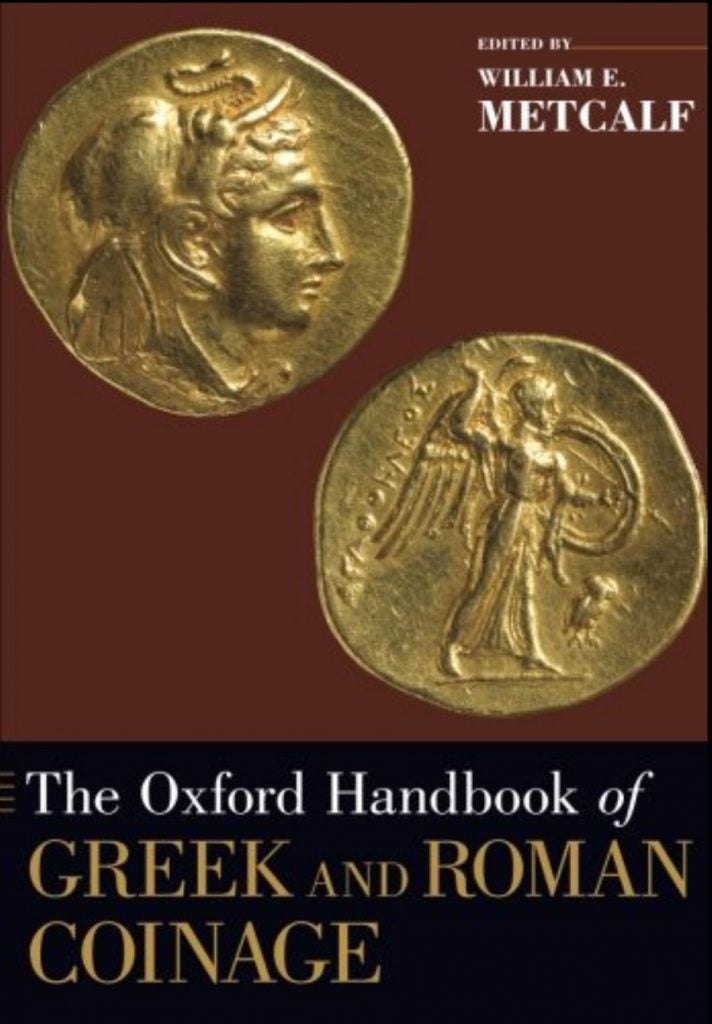
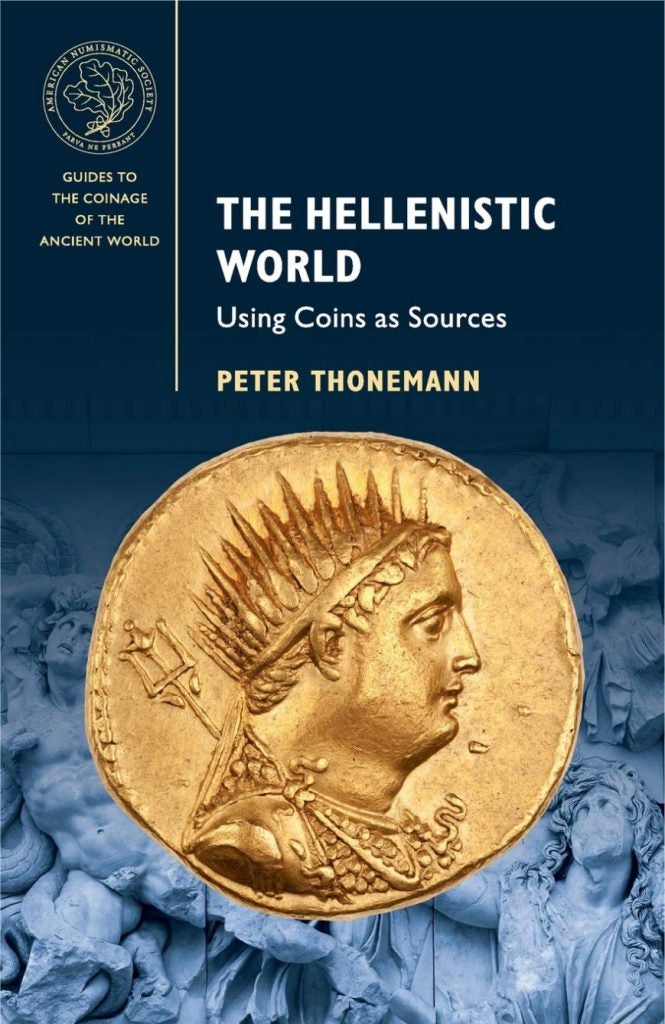
In the last post I said we would talk about closed currency systems, but as I started studying the Hellenistic coinage in the collection (323–31 BCE), it became clear I needed to talk about a couple of interesting Alexander-type issues in the Kelsey and their history. I am not a Hellenistic numismatist, but fortunately for all of us, there is a substantial amount of current research on Hellenistic numismatics that continues to open major avenues of investigations and inspire numismatists and ancient historians alike. In the study of Hellenistic coinages, I have been particularly influenced by the ongoing work of current Oxford scholars Andrew Meadows and Peter Thonemann, and I often turn to the works of François de Callataÿ, Karsten Dahmen, Frédérique Duyrat, Thomas Faucher, Catherine Lorber, Olivier Piccard, and Peter van Alfen. I will provide a brief bibliography at the end of this post with the resources I have used and in the “Resources” part of the blog as well. If your interest has been piqued, I encourage you to start by reading the relevant chapters of The Oxford Handbook of Greek and Roman Coinage and The Hellenistic World: Using Coins as Sources. Both of these volumes were published fairly recently and have extensive bibliographies. Thonemann’s volume also contains a very useful “Guide to Further Reading” on page 191.
During his overzealous conquest of the world, Alexander III of Macedon (known to most people as Alexander the Great) set up 25 identifiable mints throughout his newly won territories. He established these mints in order to pay mercenaries, and all of them produced the same typology of coins bearing his image, exemplified by this coin from the ANS collection in New York.

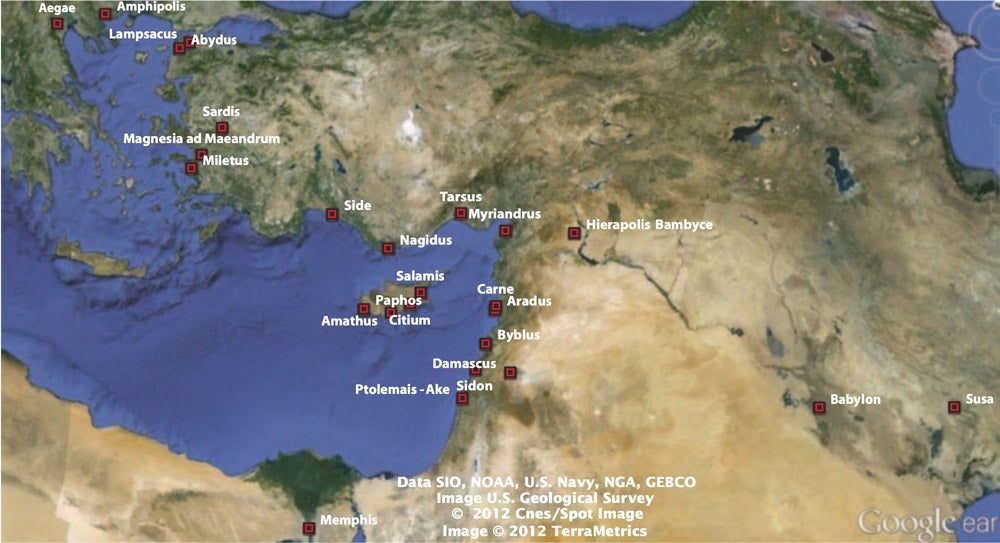
According to Meadows, this practice, while logical, is without precedent in history. The unified message of the mints consolidated the territories under Alexander’s single weight standard: the Attic drachm of 4.3 grams (with a more common tetradrachm of 17.2 g). Now, to be clear: mints and coinages existed beforehand in these regions (as we know, coinage was invented in the 7th century BCE in the kingdom of Lydia), but until Alexander’s conquest it had remained a marginal element in ancient economies meant for large, sporadic, high-value payments, not intended to travel long distances and certainly not intended for daily usage (Meadows 2014). The setting up of mints and the spread of Alexander’s coinage had a strong political message as his image was spread throughout a vast geographical area, from the Eastern Mediterranean through Central Asia and the Middle East. Having acquired vast amounts of silver from the Persian royal treasuries, these mints produced an incredible number of Alexander’s tetradrachms. Recent estimates suggest that between 333 and 290 BCE, about 60 million tetradrachms, 66 million drachms, and 12 million gold staters were produced (de Callataÿ 2005, 87; 2011, 21. See discussion in Thonemann 2015, 15).
After Alexander’s sudden death in Babylon in 323 BCE, his failure to appoint an heir precipitated several decades of political turmoil back in Macedonia and in his new territories. His generals (also known as diadochi or “successors”) first divided his vast empire into various satrapies (or governorates). This lasted only a couple of years, and in 322 a long series of military conflicts broke out, lasting until 281 BCE. These are known as the Wars of the Diadochoi. Though in essence seeking absolute control over their territories, the Diadochoi adopted the currency system left in place by Alexander and portrayed themselves as satraps in Alexander-style coinages.
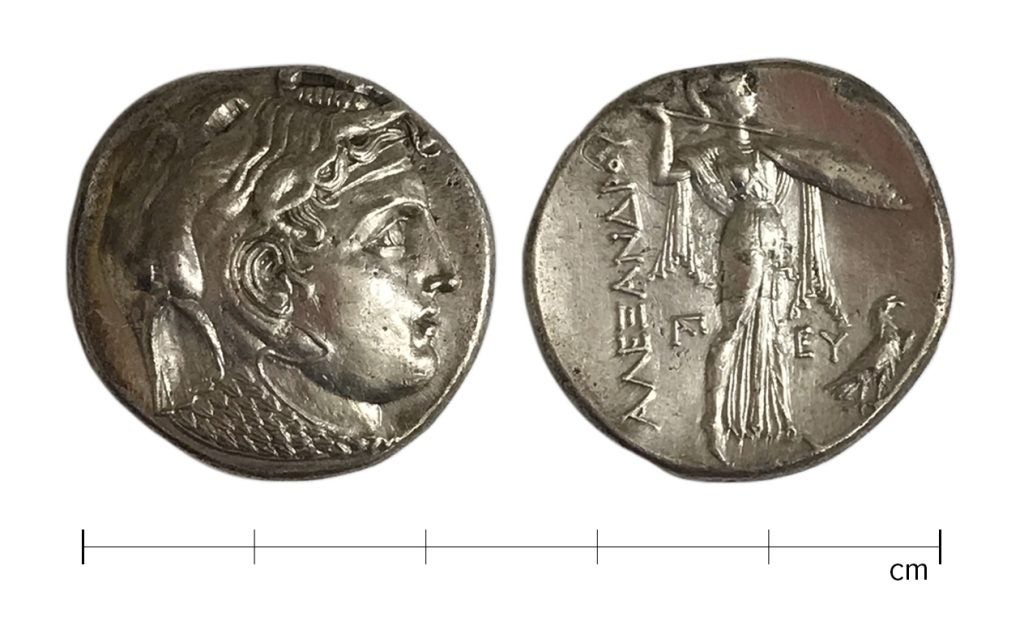
The above silver tetradrachm of Ptolemy I as satrap is part of the Kelsey collection. It depicts deified Alexander with the horned head of Ammon, facing right, and wearing an elephant headdress, mitra, and scaly aegis. The reverse still bears the legend AΛΕΞΑΝΔΡΟY l (“of Alexander”) with Athena Promachos advancing right with spear and shield.
Alexander’s image and currency system were also used back home in the Macedonian kingdom, as veterans were used to receiving tetradrachms for payment. I take this opportunity to introduce you to another wonderful resource developed at the American Numismatic Society: PELLA: Coinage of the Kings of Macedonia. PELLA is a research tool aiming to provide “comprehensive typology and catalogue of the coinages struck by the Macedonian kings of the Argead dynasty (c. 700–310 BC), arguably the most influential coinages of the ancient Greek world.” It is part of the National Endowment of the Humanities–funded Hellenistic Royal Coinages project, whose other components I will discuss in upcoming posts.
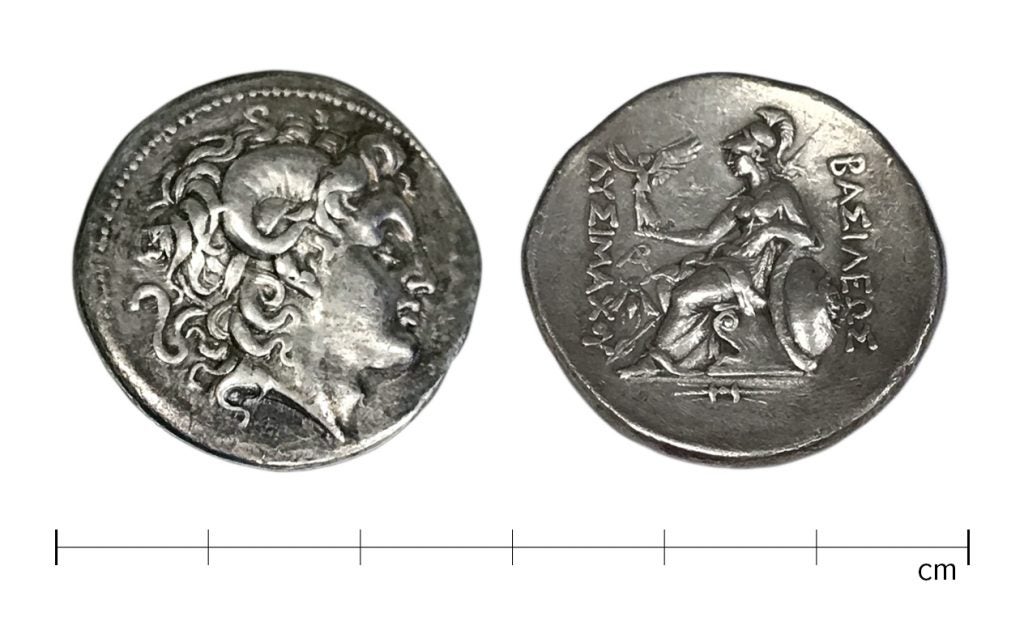
It wasn’t long before the Hellenistic rulers declared themselves kings over their territories. Initially assigned to govern over Thrace, Lysimachus overthrew Antigonos Monophtalmus in the Battle of Ipsus in 301 BCE and acquired Asia Minor and its mints. Lysimachus declared himself basileus (king) in 306 and issued coins such as the one shown above, bearing the image of Alexander with a diadem instead of a mitra (a known symbol for the god Dionysos), which directly showed his will to rule. This allowed Lysimachus to use the universal image of Alexander’s power and influence to his advantage (Dahmen 2008). A coin of the same type is found in the British Museum’s Coins and Medals department.
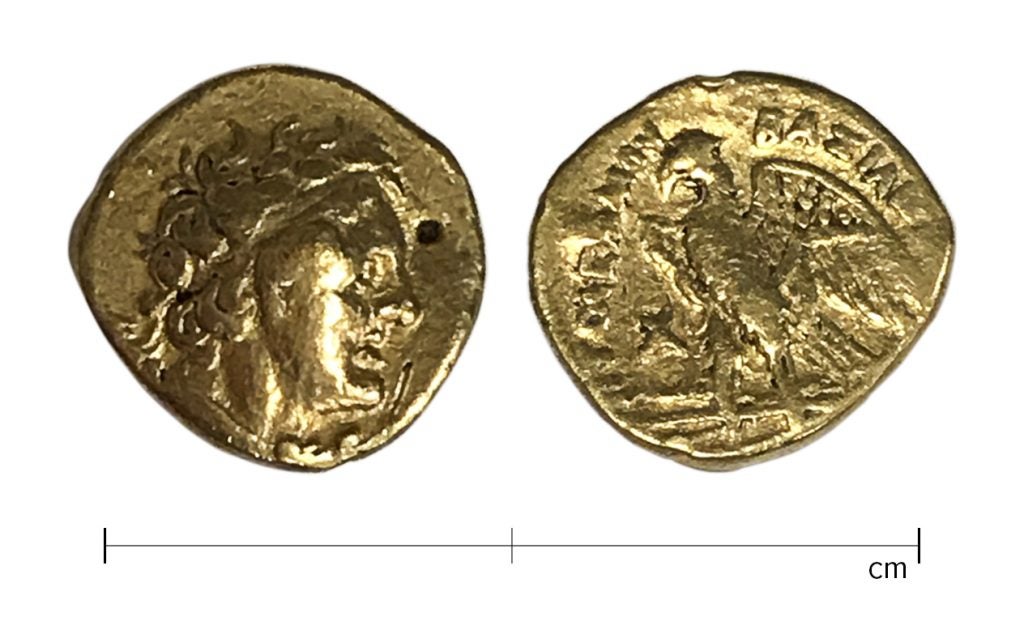
Ptolemy, as the rest of the Hellenistic rulers, also declared himself king on coins, as exemplified by this gold tetarte in the Kelsey collection (KM 88.4.14), issued between 294 and 283 BCE.
But we will talk more about the Ptolemies soon and their well-known closed currency system in a later post. If you have read this far, thank you! It was interesting to weave a thread of Hellenistic history using the coinage at the Kelsey, I hope to be able to write more posts like these as I study the collection. Stay healthy!
* * * * * * * * *
Bibliography
Arrian’s The Anabasis of Alexander and History of the Diadochoi.
de Callataÿ, François. “Quantitative Survey of Hellenistic Coinages: Recent Achievements.” In Making, Moving and Managing: The New World of Ancient Economies, 323-31 BC, edited by Zosia H. Archibald, John Kenyon Davies, and Vincent Gabrielsen, 73–91. Oxford: Oxbow Books, 2005.
de Callataÿ, François. “Quantifying Monetary Production in Greco-Roman Times: A General Frame.” In Quantifying Monetary Supplies in Greco-Roman Times, edited by François de Callataÿ, 7–29. Pragmateiai 19. Bari: Edipuglia, 2011.
Dahmen, Karsten. The Legend of Alexander the Great on Greek and Roman Coins. London: Routledge, 2008.
Meadows, Andrew. “The Spread of Coins in the Hellenistic World.” In Explaining Monetary and Financial Innovation: A Historical Analysis, edited by Peter Bernholz and Roland Vaubel, 169–95. Financial and Monetary Policy Studies 39. Cham: Springer, 2014.
